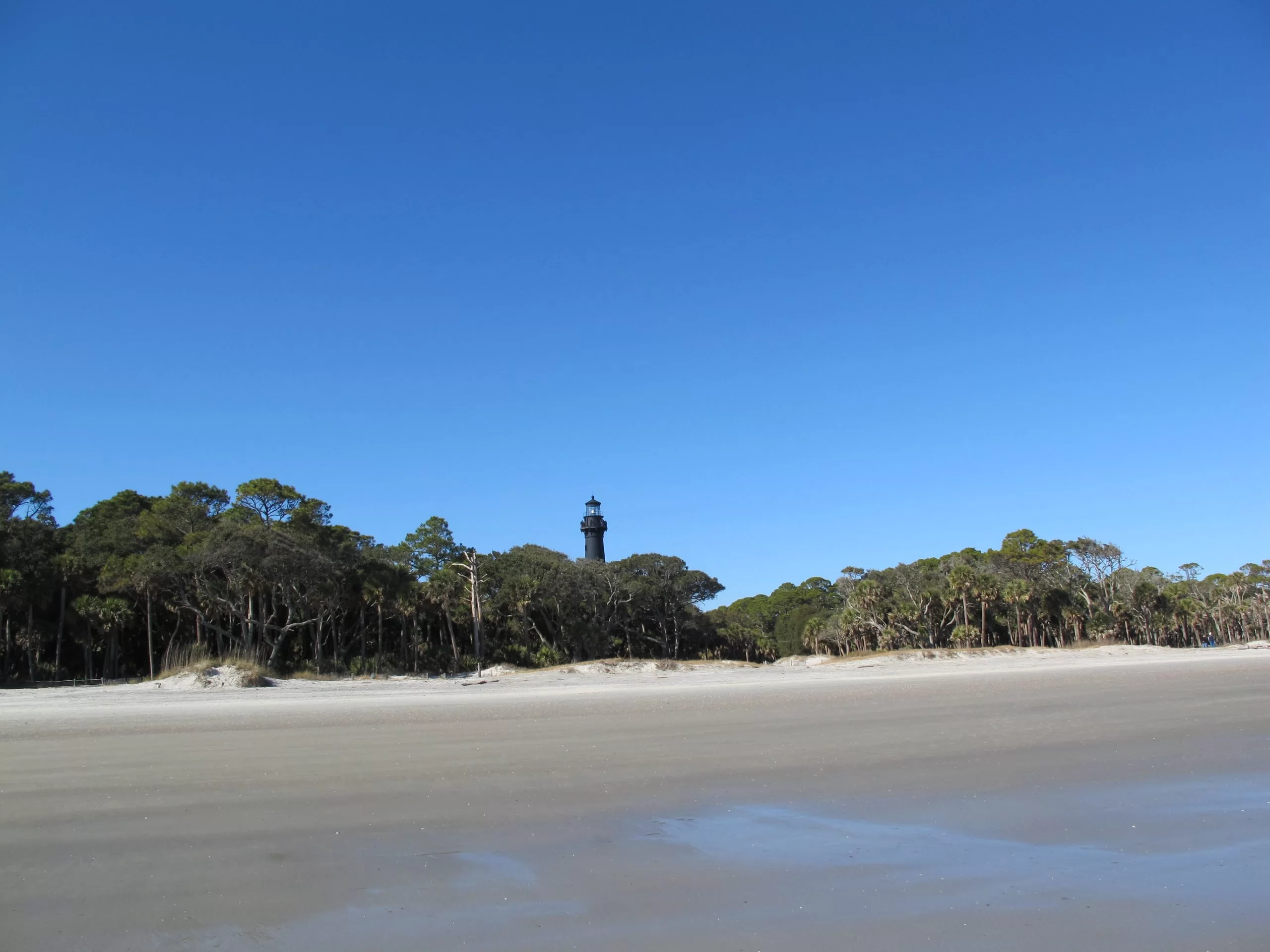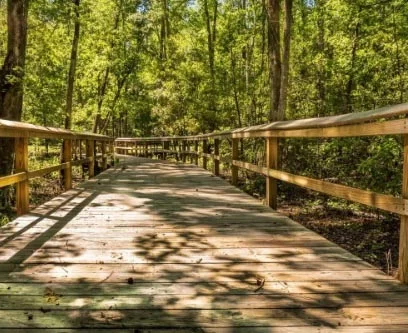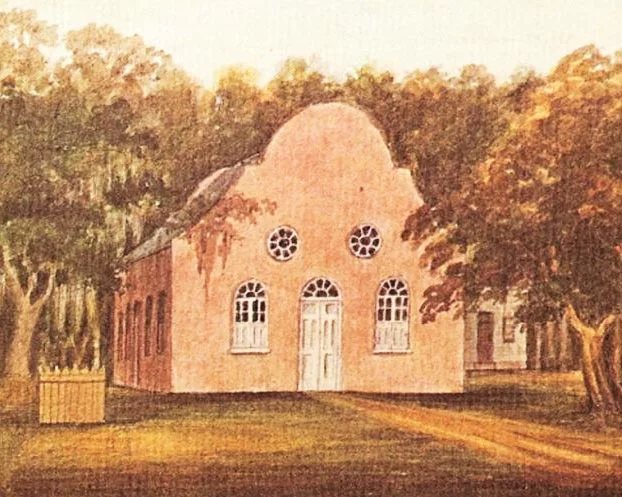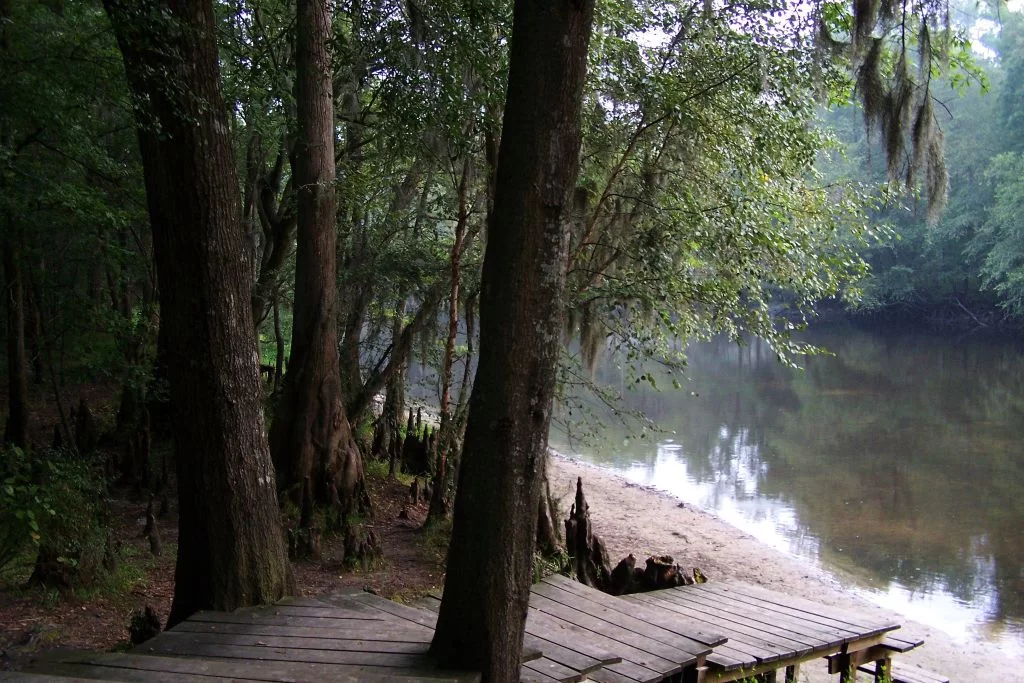Stroll through history on these hallowed grounds.
The historic churches of downtown Beaufort are steeped in cultural history and refinement. Each structure tells its own story in the life of this important city. Situated between Savannah and Charleston, this beautiful city by the sea retains much of its antebellum charm. The churches were used as stables during the Revolutionary War and hospitals during the Civil War. Others were used as schools for Freemen before, during, and after Reconstruction. Spending a day visiting these Beaufort landmarks is soothing to the soul.
The Parish Church of St Helena – 505 Church Street

The Parish Church of St. Helena was founded in 1712, and built in 1724. It was rebuilt in 1769 and extended to the west in 1817. All but the westward extension was demolished in 1842 and new wings were added which would accommodate a larger congregation. The church was used by the British to stable horses during the Revolutionary War.

Union troops repurposed the church as a hospital during the Civil War uprooting headstone slabs to serve as operating tables. Union sailors stationed in Beaufort donated an alter for the church sanctuary after the war.

The church graveyard is full of interesting and well-known Beaufortonians, including Colonel John Barnwell. He was famously known as “Tuscarora Jack”. Colonel Barnwell gained fame when he made an alliance with the Yemassee Indians and defeated the Tuscarora Indians of North Carolina, then forged a peace treaty. He died in 1724 and because of expansion, is buried under the church.

Two British officers killed during the Revolutionary War are buried in the graveyard. American Patriot Captain John Barnwell sent a soldier into the church to retrieve a prayer book, then performed a burial service for the British soldiers. He then said that America could defeat the British while still having the civility to give them a Christian burial.

Confederate Generals Lt. General Richard H. Anderson and Brigadier General Stephen Elliott are buried here as well. The cemetery across the street contains the graves of persons who died from dueling and suicide since they were not allowed burial on the hallowed grounds of the church yard.
Wesley United Methodist Church – 701 West Street

The Wesley United Methodist Church was established in 1833 as a mission for slaves and free blacks of Beaufort and the surrounding sea islands. This church, whose congregation was made up of black and white members was built in the meeting house form, which was common to the Methodist church.

The churchyard contains unmarked graves that predate the sanctuary’s construction. Headstones of both black and white members can be found in the cemetery. The church’s third pastor was buried here in 1871. According to legend and the blog of Fallon Green, an African American Genealogy expert, “These hallowed grounds contain the remains of former slaves, civil war soldiers, and some of Beaufort’s earliest prominent citizens.

The church building was given a new role in the community during and after the Civil War. The church hosted a school for freemen. It also continued to serve the community as a house of worship. The church was turned over to the African American congregation after the war and began a formal affiliation with the Methodist Episcopal Church. During Reconstruction, the first black minister was appointed to the church in 1873.

It is believed that the church was built in the 1840s. The outside structure has been dutifully maintained. The porch, steeple and choir loft were added sometime between 1849-1899. From 1847-1850, the church had 379 African American and 27 white members. The church proudly stands today in pristine condition and serves as a monument to the history of the African American population of Beaufort.

A commemorative plaque recognizes the foundation they laid for others to build upon and is dedicated to all – known and unknown – who rest here in.
The Baptist Church of Beaufort – 601 Charles Street

The Baptist Church of Beaufort began life on this spot in 1795. The present building was built in 1844 at a cost of $10,000. In 1857 the congregation was comprised of 183 white members and 3,557 slave members (many of the slave members attended missions on the sea islands). After the Civil War, the formerly enslaved members went on to create Tabernacle Baptist Church and the First African Baptist Church.

The church served as a hospital for black soldiers during the Union occupation of Beaufort. As a result, graffiti can still be found on the belfry beams and a sanctuary wall. A black deacon returned the communion silver that he had hidden away in his feather mattress during the war. The old pews were returned to the sanctuary. The communion table was recovered from Charleston.

Photo from Baptist Church of Beaufort Facebook.
The congregation was able to reclaim and repair the Greek revival style house of worship after the war. Thankfully, the interior of the building was left intact. The cove ceiling is adorned with beautifully crafted plaster ornamentation. All plaster work was created by highly skilled slave artisans. The ceiling was restored in 1953. Craftsmen were able to use 98% of the original rosettes. Recently, the ceiling was once again restored.

Photo from Baptist Church of Beaufort Facebook.
Doric columns support a gallery that wraps around three sides of the interior. This area has the best advantage for viewing the beauty of the interior and ceiling fretwork. The floors are made of heart of pine lumber and have been magnificently preserved.

Photo from Baptist Church of Beaufort Facebook.
A steeple was added to the church in 1961. Additions were also made to the rear of the church in 1997. 29 feet were added to the west wall to expand the sanctuary. This allowed for the placement of a historic pipe organ.
Tabernacle Baptist Church – 907 Craven Street

Tabernacle Baptist Church was built by Beaufort Baptist Church in the 1840s, to be used as a meeting house and lecture room. In 1863, Reverend Soloman Peck, of Boston, acquired the building, organized the church, and brought 500-members of the African American congregation from Beaufort Baptist Church to Tabernacle. In 1867 the congregation bought the property from Beaufort Baptist.

The church was rebuilt and rededicated after suffering damage during the hurricane of 1893. The stained-glass windows are fashioned from broken bits of colored glass that are held together by lead. To appreciate the beauty, it is best to see them from the inside.

Windows facing the graveyard have examples placed on the windows to show visitors a view of what the windows look like from the interior. If you ever get the opportunity, walk inside, and stand in amazement at the beauty these windows create.

The graveyard contains markers dating back to 1817, hinting that the praise house may have stood on the site before the 1840s. Robert Smalls and his first wife Hannah are also buried in the church yard. A memorial statue and plaque to Smalls is located beside the church.

Smalls was born into slavery, then in 1862, while working as a part of the crew of the Confederate steamer “the Planter”, he captured the ship and sailed it out of the Charleston harbor past Ft. Sumter and right into the hands of the Union army. Smalls went on to serve in the Union army and captain “the Planter”. After the war, he had a distinguished career in the House of Representatives and Senate. He then served four terms in the U.S. House of Representatives.
St. Peter’s Catholic Church – 710 Carteret Street

The beautiful St. Peter’s Catholic Church is the oldest Catholic church in Beaufort County. Closed for many years, the church has been returned to its former glory. Built in 1846, the chapel intimately seats 100 parishioners. The classical revival church has beautifully restored double doors, flanked by large multi-paned windows. These large windows extend down both sides of the chapel.

A brick wall that separates the church from the street dates to 1857. A Gothic trefoil window was added over the pulpit in 1899. Be sure to meander through the churchyard where you’ll find several fine examples of 19th and 20th century gravestone art. The church served as a school run by abolitionists during the Civil War. The building continued service as a mission after the war. In 1923 the interior was renovated. The church doubled in size with additions in 1943. The nave was enlarged, and the front porch was enclosed.

As time went on, the congregation outgrew the small chapel. Another church was built on nearby Lady’s Island. The small chapel then fell into disrepair until it was completely restored in 2012.

During the 2012 renovation windows were replaced with period-appropriate panes and restoration glass. Walls were replastered, hardwood floors were replaced, and the ceiling was repaired. An earlier renovation that enclosed the front porch was reversed and it was restored to its original design.

Today the chapel is used for occasional weekday mass, small weddings, and funerals. Tours are also available at Historic St. Peter’s Catholic Church and Graveyard. Tours are canceled when special events are scheduled at the historic church. Call (843)522-9555 for more information.
First African Baptist Church – 601 New Street

The First African Baptist Church was built by freed slaves in 1885. The congregation grew from an Antebellum Praise House attended by some of the African American members of the Beaufort Baptist Church. These men purchased the land and built the praise house in 1863, only two years after emancipation.

The church was used as a school to educate freedmen after federal occupation. By 1865 a cornerstone was laid, and work began on the new church.

In 1885 the congregation had grown to more than 900 members. They built this handsome and commodious carpenter Gothic church. Its most prominent member was Robert Smalls. He was a Civil War hero, state legislator and US Congressman. Smalls is buried in the churchyard of nearby Tabernacle Baptist Church. Only two members of the church are buried on the grounds of the First African Baptist Church. Arthur Waddell served as first pastor to the church. He is buried here, along with Deacon Isaac Moultrie.

According to the historic plaque in front of the church, “In 1895 First African Baptist Church was described as one of the most aristocratic colored churches in Beaufort.” No attention to detail was spared on the construction of this beautiful church. The white clapboard siding, simple gothic windows with black shutters and wooden doors are kept in immaculate condition.

A peek through the second story middle window reveals a bell tower ladder. The front doorways are carved with circular motifs and crowned in pediments. The massive side windows boast 27 panes each! Almost the entire structure of the church as seen today is original. Today the former parsonage houses the church archives. Photos, historic documents, books, and bibles can be viewed here, along with an old travelling communion set.
First Presbyterian Church – 410 Church Street

Beaufort’s First Presbyterian Church was built in 1928. Prior to construction, the closest Presbyterian church was Stoney Creek Chapel, located 15 miles away in McPhersonville. Stoney Creek Chapel was built in 1743 and served as a summer chapel when Beaufortonians moved inland to escape the summer heat and threat from mosquitoes.

By 1912, the First Presbyterian Church of Beaufort was established, and sanctuary construction began in 1928. By 1929 a new white clapboard-framed church stood proudly on the corner of North and Church Streets. The colonial revival church has tall, arched windows made of clear glass. Church members worked diligently to complete the interior under the direction of chief carpenter and minister F.B. Mayes.

By 1941 the church was completed, and all debt was paid. The Beaufort Gazette wrote an article about the church, stating, “This beautiful and artistic little church is a source of pride and gratification not only to the Presbyterians of Beaufort, but to the entire community.”

When the 1950s rolled around the little church had grown to over 200 members. It was obvious that the time was right to expand. Rather than disturb the integrity of the beautiful church, a two-story building was constructed just across the street.

The church celebrated its 100th birthday back in 2012. The church has been preserved and retains its original integrity. The wooden floors and pews are just as beautiful today as when the church was first constructed. Black shutters adorn the arched windows on the sides of the church and azaleas in the churchyard bloom pink in the spring.
Beth Israel Synagogue – 401 Scott Street

Photo by Historical Marker Database.
Beaufort’s thriving Jewish community predates the American Revolution. The Beth Israel congregation originally held services in private homes, the Masonic Hall, and the Beaufort Arsenal. As membership grew the need arose to build a permanent home for the congregation. In 1905 members of the Jewish community purchased a lot on Scott Street adjacent to the Beaufort Arsenal. A charter was granted by the state on October 16, 1905. The building was dedicated on June 14, 1908 and the congregation has worshipped there ever since!

The Beth Israel Synagogue was built by members of the congregation. The simple, frame building is one of the few wooden synagogues in continued usage in the southeast. The white clapboard structure has wooden double entry that is flanked by narrow, tall, pained windows. The same windows line each side of the church building. A social hall was added in the 1950s.

The congregation of Beth Israel Synagogue has been home to many prominent Beaufortonians. Alexander Hamilton’s half-brother Peter Lavien was a merchant who lived and worshipped in the city before the American Revolution. Major Meyer Jacobs of the Beaufort Artillery helped welcome the Marquis de Lafayette to Beaufort in 1825. Jacobs also served as mayor and a member of state legislature.

Photo by Alice deForest.
Land for a cemetery was purchased in 1910. it sits nearby on Bladen Street. The cemetery has lovely iron gates that include the Star of David motif. A parsonage was also added for the religious leader in 1920.

The Beth Israel Synagogue congregation celebrated its 1ooth anniversary in 2005. According to their website, “We work to maintain our religious traditions and Jewish identity, and to ensure at least another hundred years for this beloved Beaufort congregation, Beth Israel.”

For more information on Beaufort attractions visit https://southcarolinalowcountry.com/beaufort-port-royal-area/.








































































































































